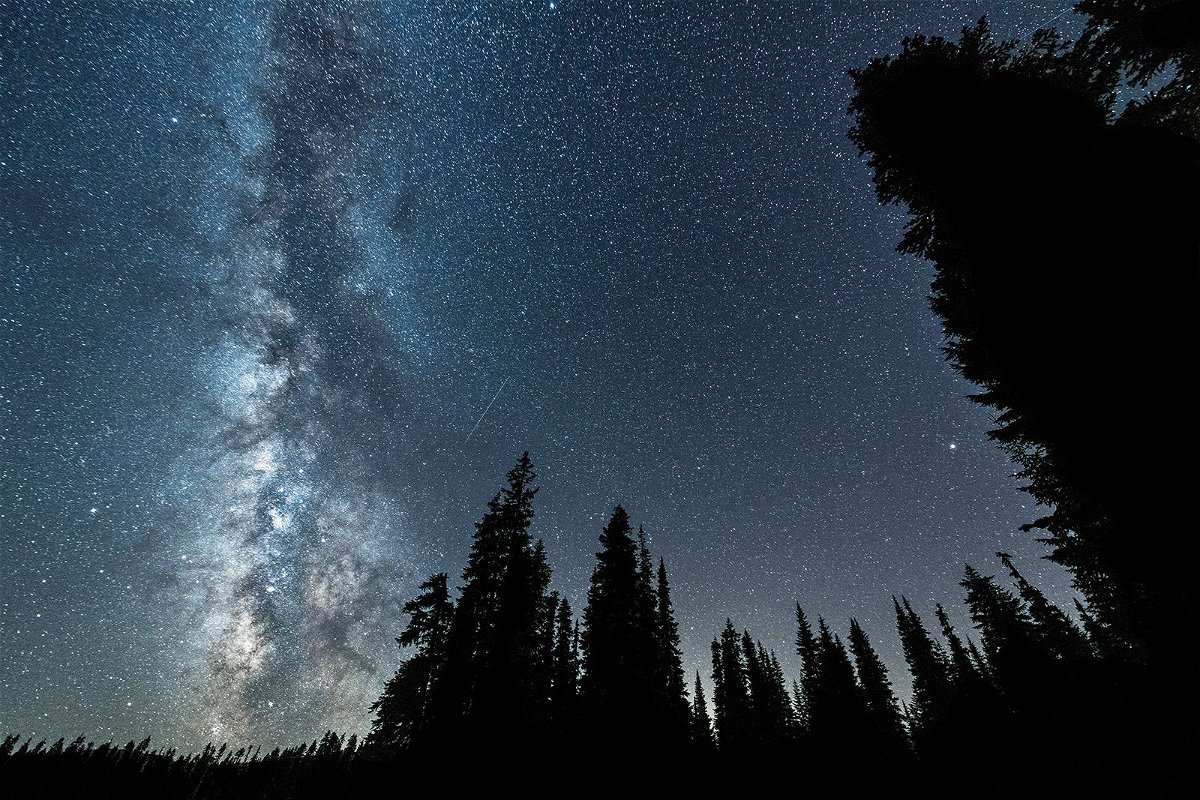Watch for fireballs from two meteor showers in the coming days

By Ashley Strickland, CNN
(CNN) — Two meteor showers, the Delta Aquariids and Alpha Capricornids, are both expected to peak during the evenings of July 30 and 31.
They will have to compete with a bright moon that’s 95% full, but the Alpha Capricornids may still produce some scintillating fireballs that could outshine the moon.
The Delta Aquariids, also called the Southern Delta Aquariids, will favor skywatchers in the Southern Hemisphere, although they will still be visible in the Northern Hemisphere (especially across the southern US) but lower on the horizon, according to EarthSky.
The best time to see the Delta Aquariids is around 2 a.m. in the regions where the shower is visible, but the full moon may make these faint meteors more difficult to see. Expect to see the Delta Aquariids mixed in with the brighter Perseid meteor shower, which has already begun but won’t peak until mid-August, according to the American Meteor Society.
If you’re unable to see the Delta Aquariids during their peak, there will be other chances because the shower lasts until August 21. Some of the meteors leave glowing gas trails that linger for a few seconds after they burn up in Earth’s upper atmosphere.
Delta Aquariids appear to come from the constellation Aquarius, visible in the southern part of the sky, while the Perseids will show up in the northern part of the sky. The Aquariids take their name from the third-brightest star in the Aquarius constellation, called Delta.
The Delta Aquariid meteor shower is created by comet 96P/Machholz. The comet, which completes an orbit around the sun every five years, was discovered by amateur astronomer Donald Machholz in 1986.
Meanwhile, the much weaker and smaller Alpha Capricornids meteor shower typically produces about five visible meteors per hour during its peak, compared with 20 Delta Aquariids meteors per hour.
However, the Alpha Capricornids make up for this small showing by creating especially bright fireballs, and they’re observable in both the Northern and Southern hemispheres, according to the American Meteor Society.
Earlier this week, the shower unexpectedly produced multiple fireballs well before the peak, according to EarthSky. And fortunately, the full moon won’t obscure their light because they’re more luminous than Venus, one of the brightest objects in our night sky.
Patience is key for viewing the meteors. It can take up to 45 minutes for your eyes to adjust to the dark for optimal viewing. The meteors can appear anywhere in the sky, but they look the brightest against the darkest sky, which is straight up.
The best way to view meteor showers is by sitting in a reclining lawn chair or lying on your back and looking up at the sky with a wide view. No special equipment is needed, but it helps to be as far from artificial light as possible. If you live in an urban area, you might want to take a drive to avoid city lights, which can make the meteor shower seem faint.
Here are some of the other celestial events to anticipate for the rest of the year.
Meteor showers
Each of the remaining meteor showers expected to peak this year will be most visible from late evening until dawn in areas without light pollution. Here are the events’ peak dates:
● Perseids: August 12-13
● Orionids: October 20-21
● Southern Taurids: November 4-5
● Northern Taurids: November 11-12
● Leonids: November 17-18
● Geminids: December 13-14
● Ursids: December 21-22
Full moons and supermoons
While most years have 12 full moons, 2023 will have 13 of these lunar events. There will be two supermoons in August, including a blue moon, which will be the closest moon to Earth this year, according to The Old Farmer’s Almanac. The fourth and final supermoon in 2023 will rise on September 29.
Here are the full moons remaining in 2023, according to the Farmers’ Almanac:
● August 1: Sturgeon moon
● August 30: Blue moon
● September 29: Harvest moon
● October 28: Hunter’s moon
● November 27: Beaver moon
● December 26: Cold moon
Lunar and solar eclipses
People across North, Central and South America will be able to see an annular solar eclipse on October 14. During the solar eclipse, the moon will pass between the sun and Earth at or near its farthest point from Earth. The moon will appear smaller than the sun and encircled by a glowing halo.
To avoid damage to the eyes, viewers should wear eclipse glasses.
A partial lunar eclipse will also take place on October 28. Only part of the moon will pass into shadow as the sun, Earth and moon will not completely align. This partial eclipse will be viewable in Europe, Asia, Australia, parts of North America and much of South Africa.
The-CNN-Wire
™ & © 2023 Cable News Network, Inc., a Warner Bros. Discovery Company. All rights reserved.
